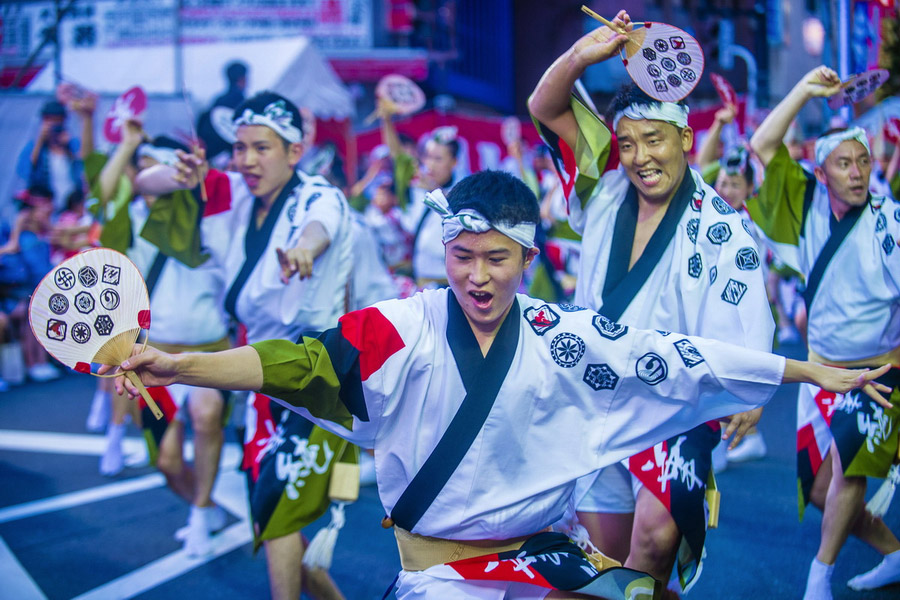
Japanese festivals (matsuri, 祭り) are an integral part of the country's culture and tradition, with over 100 unique matsuri celebrated in different regions. Each festival offers a distinctive experience, often tied to a particular city and season, making it a truly one-of-a-kind event. The Japanese people's deep-rooted passion for festivals ensures that each Matsuri is celebrated with great enthusiasm, bringing communities together and preserving Japan's rich cultural heritage.
Every Japanese festival has a centuries-old history. Matsuri were originally dedicated to various deities (kami), during which the Japanese expressed gratitude for prosperity and sought blessings for a good harvest or protection from disasters. Today, these festivals enable guests to not only observe, but sometimes even to participate in some of the ancient rituals and traditions.
Advantour does not manage the events that are listed on this page and is not responsible for any changes in announcements. Though we always strive to deliver the most up-to-date and accurate information, plans can change abruptly and without notice.
Schedule of Japan Tourism Festivals and Events in 2025
| Name of the event | Date | Venue |
|---|---|---|
| Sapporo Snow Festival | February / To be announced | Sapporo |
| Aoi Matsuri | May 15 | Kyoto |
| Tanabata Matsuri | July 7-9, August 7-9 | Hiratsuka, Sendai |
| Gion Matsuri | July 17 and 24 | Kyoto |
| Hanabi Matsuri on the Sumida River | July / To be announced | Tokyo |
| Nebuta Matsuri | August / To be announced | Aomori |
| Kantō Matsuri | August 3-6 | Akita |
| Awa-Odori | August 12-15 | Tokushima |
| Obon Matsuri | August 13-16 | All over Japan |
Sapporo Snow Festival
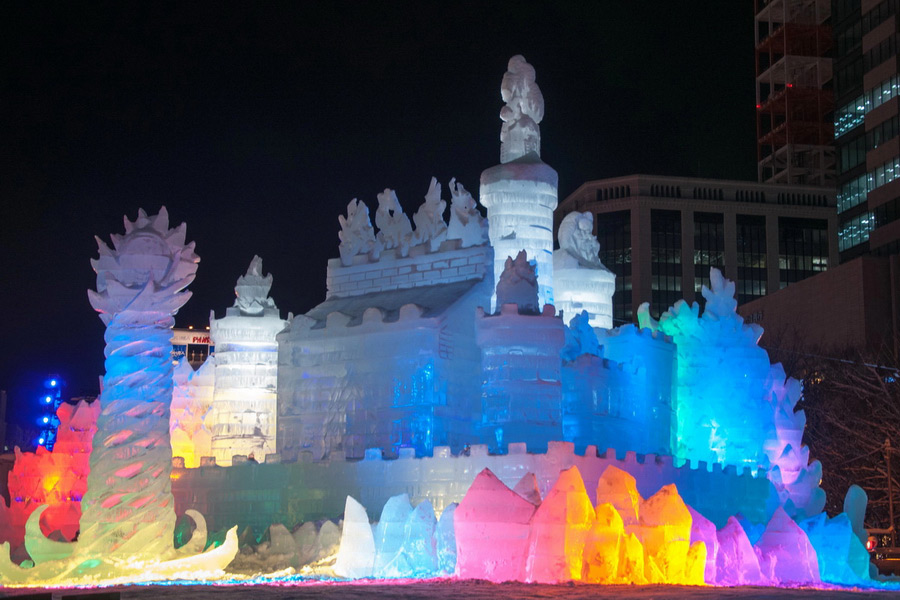
City: Sapporo
Date: Early February for a week
The Sapporo Snow Festival is renowned for its impressive ice and snow sculptures, which are created by both professional artists and amateur sculptors. The festival originated in 1950 when a group of high school students decided to make ice statues in Odori Park, which attracted a large crowd. Since then, the festival has been held annually. After the Winter Olympics in Sapporo in 1972, the festival gained worldwide attention, and the number of international participants has increased dramatically. The themes of the sculptures range from iconic landmarks and pop culture characters to cultural symbols.
The festival is spread across three locations:
Odori Park, the main site, which features the largest and most magnificent sculptures;
Susukino District, which showcases unique ice installations and light shows;
Tsudome Stadium, a family-friendly zone with snow slides and various winter activities.
Onbashira Matsuri
Venue: Lake Suwa, Nagano Prefecture
Date: Held every 6 years in early April
The Onbashira Festival (Festival of the Honoured Pillars) is not only one of Japan’s oldest festivals, with a history of over 1,200 years, but also one of its most dangerous. Teams of brave participants gather to cut down 16-meter-tall logs from the top of a mountain and transport them to Suwa Taisha Shrine. Successfully completing this daring task earns participants great respect and is viewed as a testimonial to their courage.
The festival is divided into two stages:
The first stage, Yamadashi, involves the transport of giant logs down the slope. Participants ride the logs as they are moved over slopes and rivers, travelling 10 kilometres in a dramatic ceremony known as Kiotoshi.
The second stage, Satobiki, takes place in May, when the logs are raised and installed at the Suwa Taisha Shrine, with four massive pillars placed at each of the shrine’s four corners. As part of the ceremony, participants climb the pillars to demonstrate their strength and bravery.
Aoi Matsuri

City: Kyoto
Date: May 15
Aoi Matsuri (Hollyhock Festival) is one of Japan's oldest festivals, dating back to the 7th century, though it only received its current name during the Edo era (1603-1868). The festival is dedicated to honouring the kami (spirits) of the Kamigamo and Shimogamo Shinto shrines, who, according to legend, sent a hurricane to destroy the local harvest. In response, the Emperor offered them hollyhock leaves, and the harvest was saved.
The main event of the festival is a grand procession featuring over 500 participants dressed in traditional Heian-era (794-1185) costumes. The central figure of the festival is the high priestess, known as saiō, who is chosen each year from among young, unmarried women. She is dressed in a luxurious kimono weighing around 30 kilograms and is carried in a palanquin, which also takes part in the procession.
Tanabata Matsuri
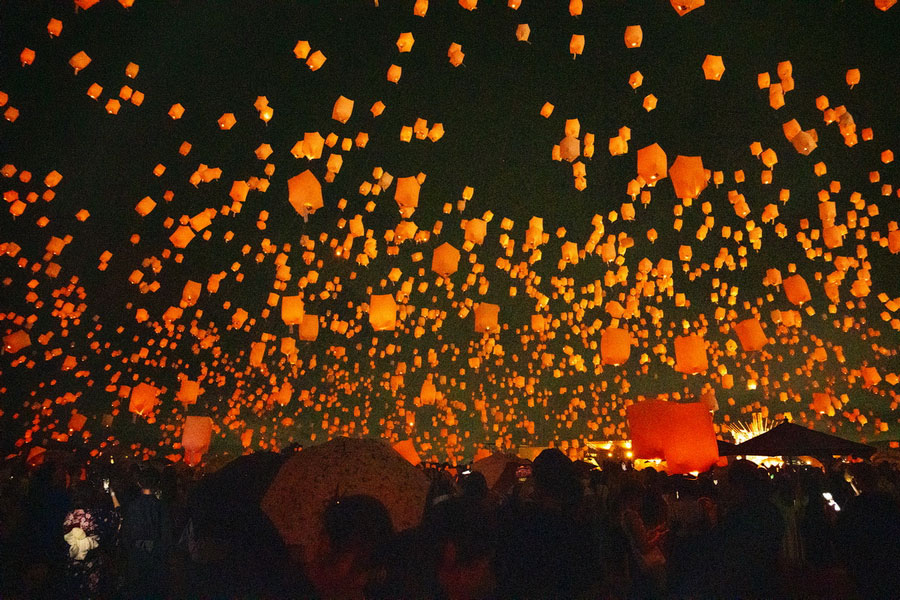
Cities: Hiratsuka, Sendai
Date: July 7-9, August 7-9
Tanabata Matsuri (Hoshimatsuri) combines Chinese and Japanese traditions, celebrating the meeting of two stars—Altair and Vega. According to legend, these stars represent Hikoboshi (the cowherd) and Orihime (the weaver), lovers who are allowed to meet only once a year on July 7, crossing the Milky Way. During the festival, people write wishes on colourful strips of paper (tanzaku) and hang them on bamboo branches, believing their dreams will come true. Streets are adorned with colourful decorations, and the festivities often end with fireworks or a lantern launch.
Gion Matsuri
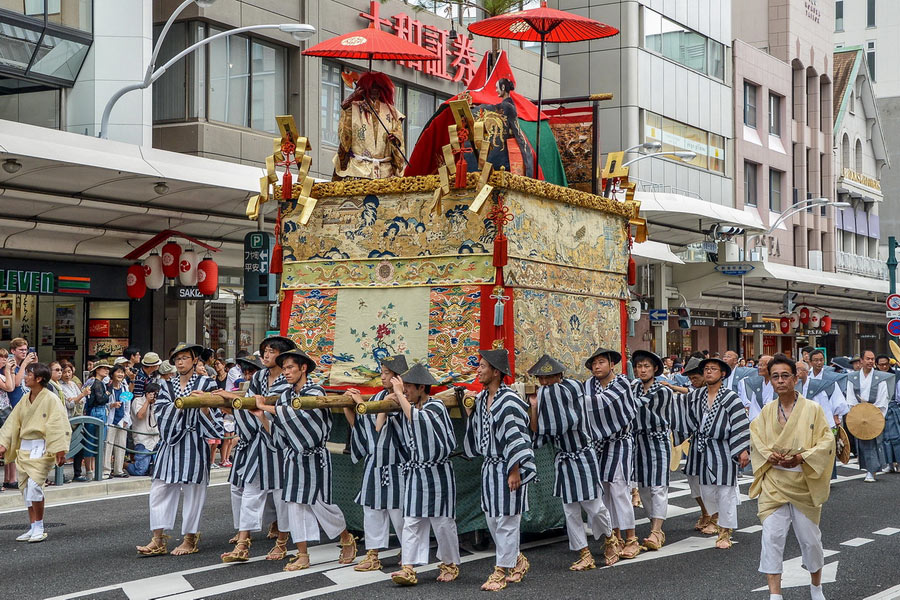
City: Kyoto
Date: All of July (main procession on July 17 and 24)
Gion Matsuri is one of the most famous and large-scale festivals in Kyoto, ranked among Japan’s top three festivals. It has been held at Yasaka Shrine since 869 as a prayer to the gods for protection against plague.
The main feature of the festival is the procession (Yamaboko Junko) of elaborately decorated floats (dashi), which come in two types: yama and hoko.
Yama are wooden structures weighing 1.2-1.6 tons, carried by about 20 bearers on their shoulders. The roofs of the yama are adorned with umbrellas and figures of historical characters. Hoko are 25-meter-tall wheeled chariots pulled by ropes throughout the procession. The chariots are made of unpainted beams and are lavishly decorated with hand-woven silks and tapestries.
The dashi procession was recognised as a UNESCO Intangible Cultural Heritage in 2009.
Hanabi Matsuri on the Sumida River
City: Tokyo
Date: Late July
Hanabi Matsuri is Tokyo's most spectacular event, centred around the art of fireworks. The first Hanabi Matsuri was held in 1733 to comfort the souls of the 900,000 who perished from widespread famine and to ward off future disasters. "Hanabi", which means "fire flowers", is a lovely metaphor that captures the colours and diversity of the fireworks. During the festival, families and friends gather along the Sumida River or in parks to enjoy the spectacle, dressed in casual summer kimono known as yukata, while food stalls, beverages, and souvenir shops fill the surrounding areas.
Nebuta Matsuri
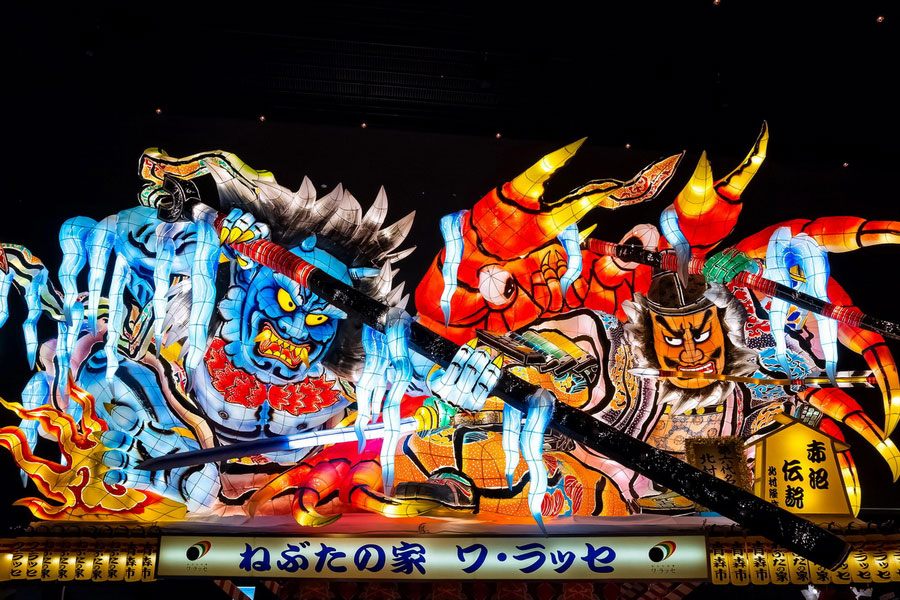
City: Aomori
Date: Early August
Nebuta Matsuri, which originates from a tradition meant to wake sleepy souls for the autumn harvest, is held across the Tōhoku region, with Aomori’s festival being the most famous. The festival features a parade of massive paper lanterns (nebuta) portraying mythical, historical, and warrior characters. These 15-meter-wide, 8-meter-tall sculptures are paraded through the streets, accompanied by traditional taiko drumming and dancers. The event ends with the three best floats launched onto boats in Aomori Bay, which beautifully illuminates the sea.
Kantō Matsuri
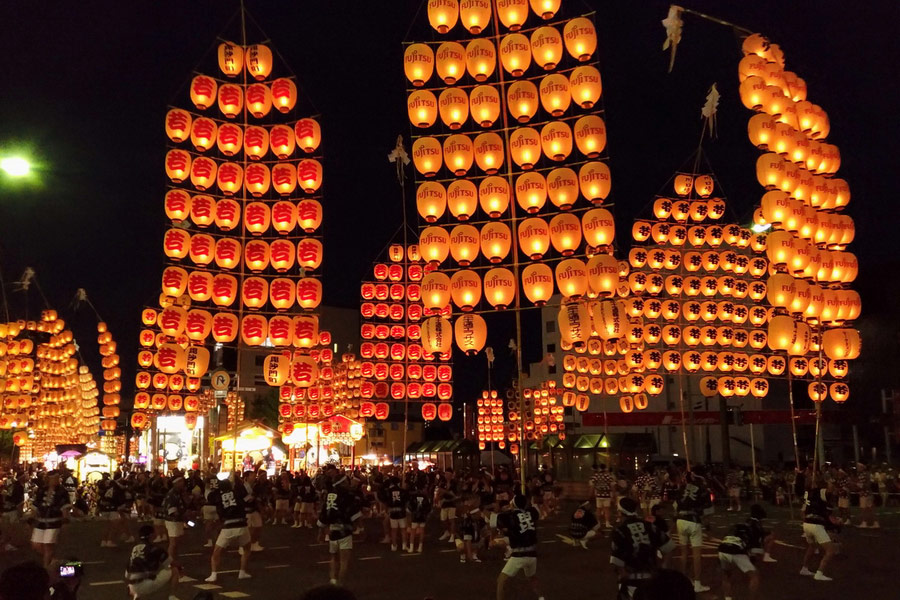
City: Akita
Date: August 3-6
Kantō Matsuri is one of the three great festivals of the Tohoku region, with the Tanabata matsuri in Sendai and the Nebuta matsuri in Aomori. Since the 19th century, the festival has been famous for its nighttime parades, where skilled participants balance bamboo poles (kantō ), each holding dozens of paper lanterns. These poles can reach up to 12 metres in height and weigh around 50 kilograms, with more than 40 lanterns attached. Participants use various techniques to balance the poles on their foreheads, shoulders, hips, or palms. Each kantō (and there may be more than 200 in the parade) is raised in unison to the sound of drums, flutes, and the chanting of the crowd. As a result, more than 10,000 lanterns illuminate the city streets during the parade.
The parades last about 90 minutes, and afterward, visitors have 15 minutes to take photos with the performers or try balancing the kantō poles themselves.
Awa-Odori

City: Tokushima
Date: August 12-15
Awa-Odori is one of Japan's most famous traditional dance festivals. It is part of a larger celebration of the art and culture of the Awa region, which was once known as Tokushima. This festival has been a joyful tradition for over 400 years, including vibrant and energetic dance moves backed by drums, flutes, and shamisen music. Participants, dressed in colourful costumes, perform individually and in groups.
Obon Matsuri

City: All of Japan
Date: August 13-16
Obon Matsuri is an ancient Buddhist festival dedicated to the remembrance of the dead that is celebrated throughout Japan. It is believed that during this holiday, the souls of ancestors return to earth to reunite with their living relatives. Given the sacred importance of family in Japanese culture, the festival is observed with great reverence and enthusiasm.
During the festival, residents dressed in traditional costumes can be seen dancing in sync around wooden structures set up in the streets. This lively dance, known as Bon Odori, serves as a joyful expression of honor and gratitude to the ancestors. On the last day of Obon, people release paper lanterns into the water to guide the spirits back to their resting place.
Why Are Japanese Festivals Important?
Festivals are an essential part of Japanese culture. Some are religious, honouring gods, while others mark seasonal changes. Each region has its own beliefs and customs, leading to a wide variety of festivals across the country. This diversity allows locals and tourists to experience the full cultural richness of Japan.

